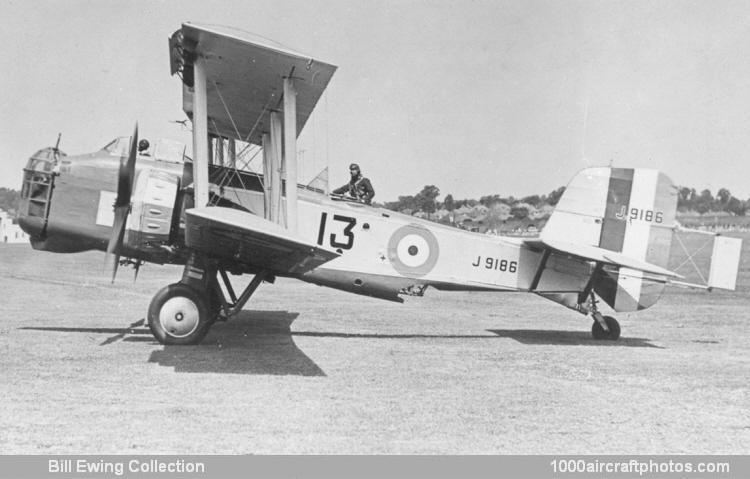08/31/2011. Remarks by Johan Visschedijk: "In spite of Air Ministry's official reluctance to equip more than one RAF squadron with the excellent Sidestrand, development of the big biplane continued at Boulton & Paul under John D. North's inspired direction. A Sidestrand Mk.III, s/n J9186, had served already as a development aircraft for the testing of various innovations and was prepared in 1933 to be the P.29 Sidestrand Mk.V still equipped as a three-seater, but with a pair of 555 hp Bristol Pegasus 1M3 engines fitted with polygonal Townend cowling rings containing nine facets each.
The spirited performance of the Sidestrand had brought into sharp prominence one particular problem associated with higher speed. This was the difficulty being experienced by the gunners in aiming their Lewis guns satisfactorily in the increasing pressure of the slipstream. North was convinced that the stage had now been reached at which the only solution lay in enclosing the gunner in a protective turret, at the same time providing power for its propulsion. He thereupon set about evolving a power-operated turret for installation in the nose of the new version of the Sidestrand.
The cylindrical turret with dome ends contained a single Lewis gun and was driven in rotation by compressed air tapped from storage bottles charged by a compressor fitted to one of the Pegasus engines and taken to a revolving joint at the turret's base. Elevation and depression of the weapon in the long vertical slit was manual, its weight being counter-balanced by that of the gunner through hydraulic connection with his seat. The arc of rotation for aiming was about 240° and an external pivot gave some degree of additional movement to the gun, the blast of the air against the barrel being taken into account in the balancing of the gun. Pressure of the gun to either side against a pair of plunger valves, caused by the gunner aiming at his target, controlled the rotation of the turret.
Other aids to crew efficiency were the provision of a fully-enclosed pilot's cockpit, heating by a controllable hot air supply provided by a heater embodied in the exhaust system of one of the Pegasus units, an automatic pilot and a windscreen of generous area to shield the dorsal gunner. Strengthening of the airframe allowed the machine to operate at a gross weight of 12,000 lb (5,443 kg) and with a bomb load of 1,500 lb (680 kg). Additional strut bracing was incorporated in the main landing gear units, and the aircraft was endowed with complete equipment to cover operations by day or by night.
Sqn. Ldr. C.A. Rea conducted J9186's first flight in its new form from Mousehold Aerodrome in 1933; its conversion was an unqualified success, and at least two more Sidestrand Mk.IIIs (s/n J9185, J9770) were modified, using the 580 hp Pegasus IIM3, to Specification 29/33 as development aircraft for the production version to be designated Sidestrand Mk.V. Specification 23/34 was drawn up for the construction of twenty-four examples for the RAF, the name of Overstrand being selected in March, 1934, in place of the earlier title.
Once more one unit only was destined to be equipped with the new Boulton and Paul product, and this was again No. 101 Squadron, which took over its first Overstrand, the converted Sidestrand s/n J9185, on 24th January, 1935, its true production P.75 Overstrand Mk.Is starting to arrive a year later, early in 1936. No. 101 Squadron thus qualified for distinction as the first RAF squadron to operate an aircraft equipped with a power-operated gun turret. J9770 was tested in 1935 with increased power in the form of a pair of 720 hp Pegasus IV engines.
Although it was very late in the era of the biplane, an improved model of the Overstrand, named the Superstrand, was designed to utilize a retractable landing gear together with other refinements and to attain a top speed of 191 mph (307 kmh). The day of the large biplane with its lack of sufficient speed was, however, finally over, and the project was abandoned.
In the course of production of the Overstrand major changes occurred in the firm when on June 30, 1934, the aircraft department of the Boulton & Paul Ltd. became a separate company known as Boulton Paul Aircraft Ltd., with a move eventually taking place from Norwich to Wolverhampton by August, 1936."
